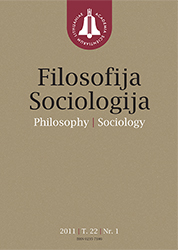Neformaliojo vaikų švietimo prieinamumo geografinis veiksnys
Access to non-formal children’s education: geographical aspect
Author(s): Meilutė Taljūnaitė, Ona PetronienėSubject(s): Education
Published by: Lietuvos mokslų akademijos leidykla
Keywords: non-formal children’s education; social cohesion
Summary/Abstract: The article deals with the network of different types of non-formal education institutions in Lithuania. Their distribution and possibilities to provide non-formal education to children differ very much, and this does not correspond to the aims of social cohesion. This aspect is on the schedule of the municipals now, because they are the main social actors responsible for non-formal education. The findings suggest that the non-formal education of children in Lithuania, in particular as human resources, differs geographically, since children are the human capital of their “owner” and use the free mobility and opportunities to decide on how and where to exploit their skills and knowledge. Next to the already existing skills and knowledge, mobility for each individual should be ensured so as to acquire additional knowledge and skills as economic, social and cultural resources which will pay dividends in the future, so that Lithuanian non-formal education institutional environment remains a passive person of the “maintenance” area. A wide range of ratings and questionnaires show that subjective factors can account for an incomplete, inadequate and often informal, unacceptable use of human resources in organizations, which leads to the misuse of these resources and does not create any value for Lithuania.
Journal: Filosofija. Sociologija
- Issue Year: 2011
- Issue No: 4
- Page Range: 455-465
- Page Count: 11
- Language: Lithuanian

